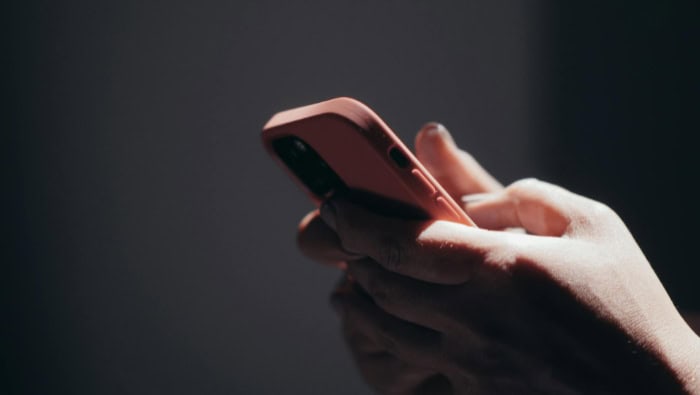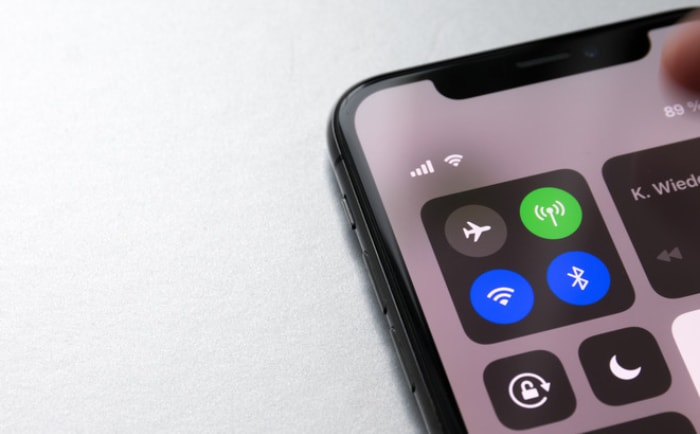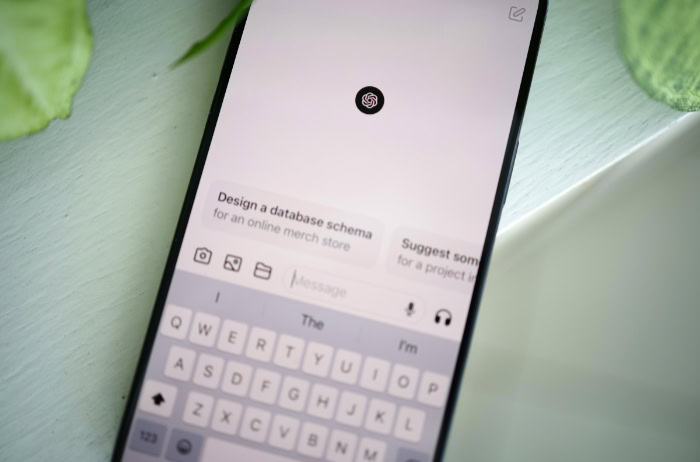Foldable Phones vs. Traditional Smartphones
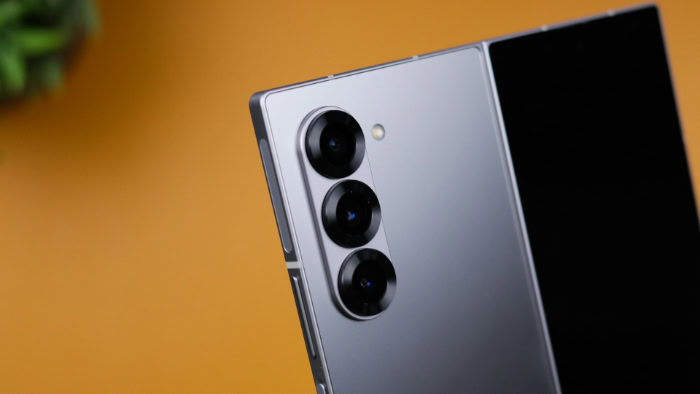
Tech enthusiasts and everyday users alike now face a fascinating choice: stick with the tried-and-true feel of a traditional smartphone or jump into the flexible promise of a foldable device. With new foldables hitting shelves, their price difference over classic phones shrinking, and big brands all refining their designs, choosing between these two isn’t as simple as it once was.
Your next phone might be the most versatile gadget you own, or it could double down on the reliable ease you’ve come to expect. The real challenge lies in knowing what matters most for your routine, your wallet, and your creative ambitions.
Form Factor And Design
Adopting a foldable or a traditional smartphone affects nearly everything about the day-to-day experience, starting from the moment you take the device out of your pocket. Looks and ergonomics matter to most users, not just for style but for comfort and practicality.
As foldables evolve from novelties to mainstream choices, their unique design strengths and trade-offs become much clearer in daily use.
Screen Real Estate vs. Pocketability
Foldable phones offer a dramatic shift in what a “pocket-sized” device can deliver. Flipping a foldable open reveals a tablet-like screen large enough for immersive video streaming, multitasking, or even getting work done on the go.
Messaging with a full keyboard alongside a document, enjoying movies without black bars, or editing photos on a spacious canvas becomes far easier. Yet, after the fun ends, the phone folds back down to something that fits in your pocket, albeit sometimes in a thicker package.
On the other hand, traditional smartphones, also known as slab phones, stick with a straightforward design: a single glass panel that balances display size with ease of use. Their screens have steadily grown over the years, pushing nearly to the edges, making the most of every millimeter.
Still, one-handed operation and slip-into-your-pocket convenience remain strong points that many users value. Anyone who prefers a minimal bulge in their jeans or needs to use their phone while walking will recognize the advantage of a single, uniformly slim device.
Build Quality & Materials
Materials and construction separate these two types of phones more than ever before. Foldables rely on flexible OLED screens and ultra-thin glass layered with protective film, supported by complex hinge mechanisms that allow the device to open and close hundreds of thousands of times.
The engineering behind these hinges represents a marvel of miniaturization, but even the most advanced designs can be vulnerable to dust, debris, or sharp impacts. Manufacturers are constantly racing to balance flexibility with resilience, introducing tougher protective layers and improved tolerances.
Slab phones, in contrast, use tried-and-true building blocks like Gorilla Glass Victus on the front and back, paired with sturdy aluminum or stainless steel frames. Everything about their construction feels familiar, solid, and in most cases, highly resistant to everyday wear and tear.
While less dramatic in design, they’re easier to safeguard with a simple case or screen protector, and they typically have fewer moving parts to worry about.
Weight & Ergonomics
A foldable in your hand feels distinctly different from a traditional phone. Added hinges and layers for the folding display inevitably make most foldables heavier and thicker than their slab rivals.
Even unfolded, the weight often feels unbalanced or shifts awkwardly based on how the device is held. Those who value ultra-lightweight gadgets or need to use their phones with one hand for extended periods might notice the difference very quickly.
Traditional smartphones keep things simple with a uniform thickness and balanced weight distributed from top to bottom. They slip easily into and out of pockets, work well for quick calls or texts, and fit comfortably in the palm.
For users who want the least intrusive device possible, this classic feel still has strong appeal.
Form and function go hand in hand, and no approach wins out in every situation. Foldables succeed at giving you a device that can adapt to two different modes, while slab phones succeed at simply being fuss-free and dependable in every grip.
Each style presents a different solution to the old question: how much screen do you really want, and what will you put up with to get it?
Durability And Longevity
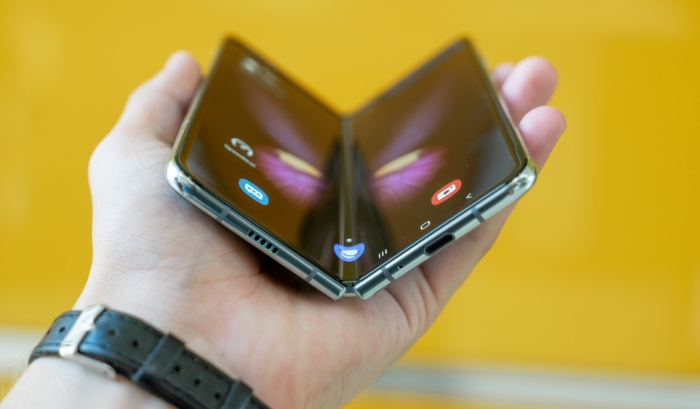
Durability sits front and center when comparing foldable phones to traditional slab smartphones. Days filled with text messages, pocket stashes, and the occasional accidental drop put any phone to the test, but devices with moving parts and flexible screens introduce fresh variables.
For buyers concerned about how their investment will hold up to real-world use, looking closely at the mechanics, materials, and serviceability of each type becomes especially important.
Hinge Mechanics And Crease Resistance
One of the most unique aspects of a foldable phone is its hinge. Hinge assemblies allow the device to open and close thousands of times, and recent designs now withstand more fold cycles than early models.
Despite major improvements, hinges remain a complex point of vulnerability. Tiny gaps and moving parts create new entryways for dust and moisture, which can work their way inside and risk long-term damage if not managed properly.
Some foldables come with improved water resistance, but full protection against both dust and liquid is not always guaranteed.
The flexible screen itself can develop a visible crease along the fold. While some brands offer clever engineering to minimize the look and feel of the crease, most users still notice it at least in certain lighting or when dragging a finger across it.
Over time, repeated folding and unfolding may cause the crease to become more apparent, although this usually does not interfere with regular use.
Drop And Scratch Protection
Protection after an accidental drop presents very different challenges for each device type. Traditional smartphones have the advantage of toughened glass such as Gorilla Glass Victus, which is designed to survive both drops and scratches during everyday use.
Many people use a case or screen protector to add an extra layer, making slabs remarkably resilient under most circumstances.
Foldables, on the other hand, use ultra-thin, flexible materials and polymers to allow the screen to bend. While modern foldables feel much sturdier than their first-generation ancestors, their screens are still more susceptible to scratches and dents.
Even fingernails, keys, or coins in the same pocket can leave a mark. Cases for foldables are now widely available, but finding a perfect fit that covers the hinge area and provides real protection remains more complicated.
The hinge itself may also take the brunt of impact if dropped at the wrong angle, raising additional concerns for users who lead particularly active lives.
Repairability And Warranty Coverage
Repair costs and warranty terms play a major role for anyone thinking long-term. Foldable phones generally require more specialized repairs when something goes wrong.
Replacing a damaged flexible display can cost significantly more than fixing a standard glass screen. Hinge assemblies also involve meticulous work and custom components.
Turnaround times at service centers may be longer, and sometimes finding an authorized technician who can confidently handle foldables is more difficult, especially in smaller markets.
Traditional smartphones are much more familiar territory for repair shops and manufacturers. Broken glass or a cracked frame can be fixed quickly, often at a lower cost.
Warranty coverage tends to be broader and can include accidental drops or common types of damage with extended plans. Foldable phones, in contrast, may include special warranty terms that require careful reading, particularly for the hinge and flexible screen.
In everyday use, both categories present their own strengths and weaknesses in surviving life’s mishaps. Foldables shine by pushing innovation, yet ask users to be gentler with their devices or prepare for potentially higher service costs.
Traditional phones double down on a proven ability to shrug off bumps and bruises, offering more peace of mind for those who value sheer toughness.
Performance And Battery Life
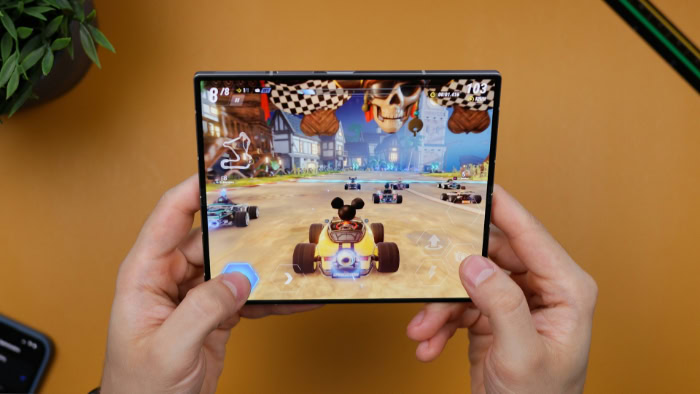
Every smartphone shopper expects seamless performance and reliable battery life, regardless of form factor. Foldable phones and traditional slab models both pack top-tier hardware into slim shells, yet their designs present distinct challenges and benefits in daily use.
While manufacturers continue closing the gap in raw power and battery technology, the way each device handles processing, energy demands, and charging methods can impact user satisfaction over months and years.
Processing Power And Thermal Management
Nearly every major foldable now includes flagship processors on par with premium slab smartphones. High-end chipsets ensure responsive multitasking, gaming, and app performance.
In benchmarks and real-world use, there is little difference between a leading foldable and a non-folding equivalent when it comes to sheer speed.
However, fitment in a folding chassis often means tighter quarters and more complex internal layouts. Components must compete for limited space, and airflow is more constricted than in a typical slab.
Extended gaming sessions or heavy multitasking might cause foldables to warm up faster, sometimes triggering thermal throttling to keep temperatures safe. Traditional smartphones can spread heat more evenly, which usually allows for more consistent performance without as much risk of uncomfortable hot spots.
Battery Capacity vs. Screen Demand
Running a large, bright display draws significant power even in a conventional phone. Foldables, with their dual-screen or expansive single-panel setups, introduce new demands on battery technology.
Larger devices tend to include bigger batteries, yet the added surface area and higher refresh rates can quickly offset that benefit. Using both screens together or running apps in multitasking mode generally drains the battery faster than using a single main panel.
Slab smartphones, usually with a single display optimized for power efficiency, often provide better longevity per charge under similar workload conditions. They take advantage of refined, mature battery optimization and can push through a heavy day on a single charge for many users.
Adaptive refresh rates in both types help conserve battery, but the energy draw from two or more active displays remains a hurdle for foldables, particularly for users who love multitasking or watching a lot of video.
Charging Speeds & Lifespan
Charging speed remains a high priority for both device categories. Most foldables and slab smartphones now offer fast wired charging with wattages that dramatically reduce the time spent plugged into a wall.
Wireless charging has become nearly standard among higher-end models, providing added convenience at home or work.
Battery lifespan, however, does raise some questions for foldables. Frequent cycles of rapid charging, coupled with potentially higher power demands, can wear down the battery a bit sooner than in a traditional phone.
The complexity of foldable internals sometimes makes battery replacements costlier or more time-consuming. On the slab side, simpler layouts and well-tested battery management systems offer reassuring predictability after years of use.
User Experience And Productivity
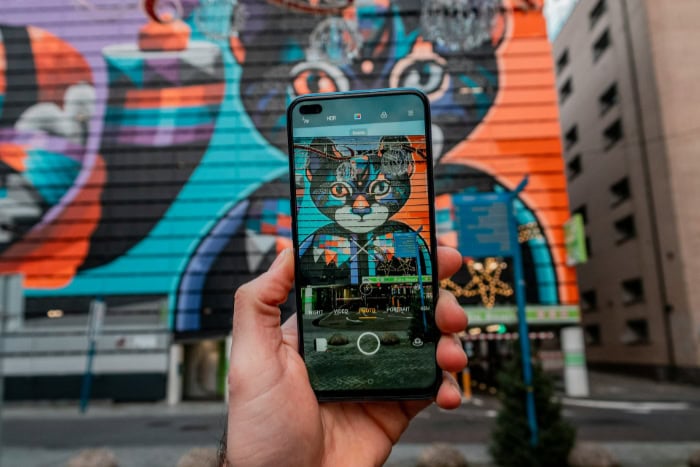
What a phone feels like to use each day goes far beyond hardware specs or display sizes. True satisfaction comes from smooth multitasking, entertainment, photography, and the invisible tweaks that make a phone feel intuitive.
Foldables bring exciting new tools to the table, promising to shake up routines, while traditional smartphones continue to offer consistent and refined experiences polished over years of use. Each style shapes productivity, creativity, and enjoyment in its own way.
Multitasking And App Optimization
Foldable phones excel at freeing users from single-window constraints. With their expansive screens, running two or even three apps side by side feels natural.
Features like Flex Mode, a concept introduced by Samsung, allow the device to sit propped at various angles, turning part of the screen into a keyboard or control panel while the rest displays content. App continuity lets users shift from the cover screen to the main display seamlessly, preserving workflow without missing a beat.
Traditional smartphones typically stick with one primary display, making true multitasking less prominent. While split-screen is sometimes possible, a smaller panel can cramp two apps, making the experience feel forced or crowded.
App optimization in established platforms remains excellent, but the creative edge provided by larger, foldable real estate can be a real draw for those who demand more from their devices.
Media Consumption & Gaming
A larger, open foldable screen transforms how movies, shows, and games look and feel. Wide aspect ratios draw viewers in, sometimes offering an even more immersive experience than tablets.
Gaming can be especially fun on foldables, as the broad surface invites a console-like grip and leaves plenty of room for on-screen controls or paired gamepads. However, game and video compatibility can vary. Some titles or streaming apps may letterbox or display black bars to adjust for unusual dimensions.
Traditional smartphones streamline playback for most popular content, with widely supported aspect ratios and crisp displays. Games are heavily optimized for these devices, minimizing compatibility headaches and guaranteeing a more familiar feel in the hand.
Slab phones also tend to be lighter, which fans of marathon gaming or binge-watching sessions might appreciate.
Photography & Content Creation Advantages
Foldable phones offer creative possibilities for anyone interested in photos, video, or social content. Folding hinges can turn the phone into its own stand, enabling hands-free photos, video calls, or time-lapse captures at creative angles.
Recording or snapping selfies with the device propped up on a table removes the need for a tripod or outside help. Some foldables also leverage the main camera for selfies and previews, raising the bar in image quality for front-facing shots.
Classic smartphones rely on simple hand-held use or require extra accessories for stable shots. While modern image stabilization and AI enhancements help improve photo and video results, achieving specific angles or hands-free results usually calls for a tripod or creative balancing act.
The convenience of quickly opening up a foldable and shooting from a unique angle can make documenting daily life feel more flexible.
Value And Market Considerations
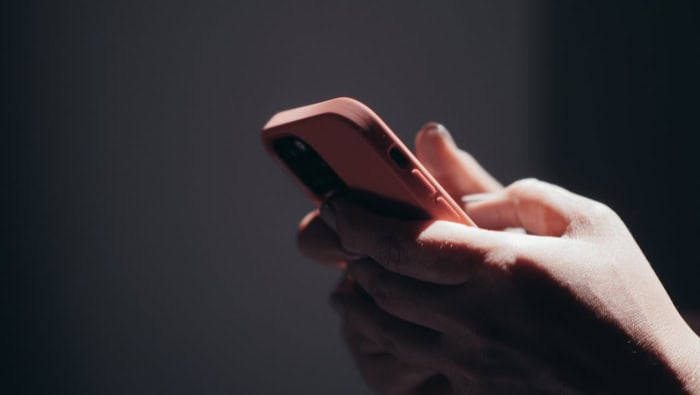
Cost has consistently played a major role in the smartphone purchasing process, but the gap between foldables and traditional smartphones is not as wide as it once was. As buyers weigh flashy new features against long-term expenses, the conversation now centers on total value, resale potential, and which style is truly best suited to individual lifestyles.
It is about more than sticker shock; every aspect from resale demand to daily usability factors into what a device is truly worth.
Up-Front Price And Total Cost Of Ownership
Initial prices for foldable phones remain higher than most conventional slab smartphones, although the difference is shrinking with each new release. Early adopters once faced a steep premium, but wider competition has pressured manufacturers to make foldables more accessible.
However, additional costs often come into play beyond that initial price tag. Foldable devices typically require costlier repairs and specialized insurance due to their complex displays and hinges, reflecting in higher premiums or deductibles.
Trade-in values may be less predictable, as some retailers factor in potential out-of-warranty repairs for hinges or displays when evaluating value.
Traditional smartphones, on the other hand, benefit from a saturated and mature market. Initial pricing covers a wide spectrum, with many flagship slabs still priced below their foldable counterparts.
Insurance policies tend to be more affordable, and repairs for glass or aluminum are usually straightforward and less expensive. Consistent demand keeps trade-in values stable and makes it easier for users to offset upgrades.
Adoption Rates And Resale Demand
Market share for foldables continues to grow, yet slab designs still command the widest adoption by a significant margin. That popularity ensures a steady stream of buyers in the secondary market, making it easier to resell or upgrade when a newer model arrives.
Resale platforms are very familiar with traditional devices, so returns or exchanges are typically smooth.
Foldables spark a lot of buzz, but current secondary-market demand varies significantly by brand, model, and local market conditions. Concerns about hinge wear, visible creases, or battery life can temper resale interest slightly, causing prices for used foldables to depreciate faster in certain cases.
As reliability improves and more users embrace the format, this may change, but traditional slabs currently maintain steadier resale values and easier liquidity.
Who Should Buy Which?
Every user brings different expectations and habits to their next phone choice. Foldables may appeal to commuters or professionals who love multitasking on the go, or anyone who creates and shares content daily.
Their ability to unfold into a tablet-sized canvas is ideal for staying productive, reading, or watching videos on crowded trains and buses. Gamers might appreciate the larger display area, but should consider whether favorite titles are optimized for the foldable format.
Traditional smartphones remain the go-to for users who prioritize durability, simplicity, and predictable performance. Busy students, outdoor workers, or anyone constantly pulling a phone from their pocket may prefer the lighter weight and proven reliability of a classic slab.
If cost and ease of maintenance are high priorities, traditional devices typically have an edge.
Conclusion
Foldable phones offer innovative versatility, letting users enjoy tablet-sized screens without giving up pocketable convenience. Multitasking, creativity, and hands-free features get a boost, making these devices tempting for busy professionals, content creators, or anyone eager to try something new.
Still, the added weight, complex hinges, and flexible materials require gentler handling. Potentially higher repair costs and a faster rate of depreciation remain important considerations.
Traditional smartphones focus on durability, simplicity, and consistent day-to-day performance. Lighter and easier to protect, they handle drops and scrapes better and remain cheaper to insure, repair, and resell.
App compatibility, gaming, and general reliability continue to favor the familiar slab shape, especially for users who depend on their phones under tough conditions or want predictable battery life and manageable long-term costs.
No single choice works for everyone. The decision hinges on what matters most: is it compactness, ruggedness, ultimate productivity, or staying within a set budget? Considering how you use your phone every day, your hobbies, routine, and priorities will guide you toward the form factor that genuinely fits your life.
By weighing these practical factors, any buyer can feel confident about choosing a device that feels like it was truly made for them.
